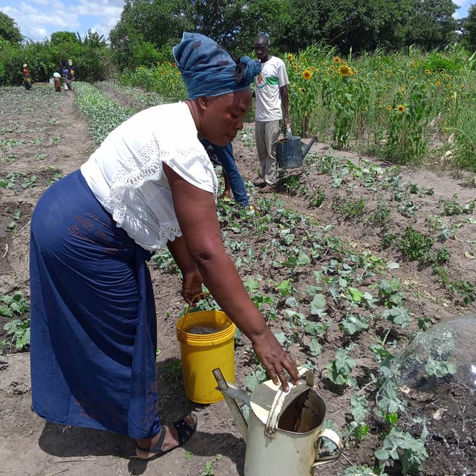
strategy
While focusing on strong relationships, we strive to assist smallholder farmers to engage in a successful and sustainable agribusiness sufficient to provide for the needs of their families. The result would seek increased self-confidence, self-sufficiency, and resilience. We believe there is immense potential to reach this goal.
We have completed two years of assessing needs and opportunities to improve farming for small-scale, subsistence farmers in Zambia, including a four-month stay in the country from November 2024 through February 2025. Of the many pilot projects we tested, farmer education to improve maize production proved to be the most successful and holds the greatest potential for impact.
In rural Zambia, most impoverished households grow their own maize—the main staple of their diet—using only a hoe as their primary tool. Few have access to phones, computers, or the internet. While most farmers have free access to land capable of producing over 100 bushels per acre, current yields average only about 20 bushels per acre. Research shows that with better management and adequate inputs, yields of 140 bushels per acre are achievable. Unfortunately, most training programs target larger “commercial” growers rather than subsistence farmers.
Over a three-week period during my stay, the local trainers we partnered with taught more than 2,000 villagers in the Petauke area. All participants reported learning practices that would make them better farmers. This curriculum was developed after three months of intensive daily work with 21 local Zambians, allowing us to identify the lessons most relevant and adoptable for subsistence farmers.
Key lessons included:
-
Control weeds consistently to preserve soil moisture and nutrients.
-
Space seeds evenly when planting.
-
Distribute fertilizer evenly to encourage root development.
-
Delay urea application to reduce losses from rainfall.
-
Consider the number of seeds in a 10 kg bag—this can affect seed costs by up to 40%.
We also aim to help local leaders organize group purchases of seed, fertilizer, and chemicals to secure volume discounts and access higher-quality products. Additionally, we are exploring small-scale production of a simple tool called a “ripper.” While in Zambia, we had about 70 made locally. Farmers found them very effective—permitting the seed to be placed evenly in the row, worked in a third of the time compared to a hoe, and required much less tillage than an ox-drawn plow.
Our next phase will focus on establishing up to 50 training locations and creating free online training materials accessible to anyone. We believe this targeted approach will deliver the greatest benefit to Zambian farmers in the shortest time with the resources available, building on the most successful strategies from our first two years
Our trainers will be selected based on the following minimum requirements:
-
A passion to serve
-
Agricultural experience
-
Ability to speak, read and write in English
-
Access to the internet and phone
-
Ability to communicate via WhatsApp
-
Willingness to plant, maintain and harvest a demonstration plot according to guidelines
-
Conduct at least four training sessions during the growing season for local farmers
-
Communicate and engage with extension, the District Agriculture Commission Officer (DACO), tribal leaders and local businesses.

_edited.png)






